Abstract
The influence of a combination of ampicillin and a beta-lactamase inhibitor, sulbactam, on colonic bacterial flora was studied in patients undergoing colorectal surgery. Drug concentrations were determined in serum, intestinal mucosa, and feces. The results of the drug concentrations were correlated with changes in the numbers of aerobic and anaerobic bacterial bowel flora. Ampicillin and sulbactam were given intravenously to 21 patients in 500-mg doses of each drug every 8 h for 2 days. The first dose was given when anesthesia was begun. The concentrations of ampicillin in serum were significantly higher (0.01 greater than P greater than 0.001) than those of sulbactam. In contrast, at all time intervals, the concentrations of sulbactam in intestinal mucosa were significantly higher than those of ampicillin (0.05 greater than P greater than 0.01). The serum half-life of the two drugs was the same at 2.2 h. After one dose of the antibiotics, sulbactam was detectable in the feces of four patients, and ampicillin was detectable in the feces of 11 patients. During the 2 days of ampicillin and sulbactam prophylaxis, no measurable decrease occurred in the anaerobic flora of the bowel; a mean decrease of 3 logs occurred in the anaerobic bowel flora. The results of this study show that ampicillin and sulbactam prophylaxis had a greater effect on the anaerobic bowel flora than on the aerobic bowel flora. In light of the in vitro spectrum of ampicillin and sulbactam activity, it was surprising that bowel aerobic flora was unchanged.
Full text
PDF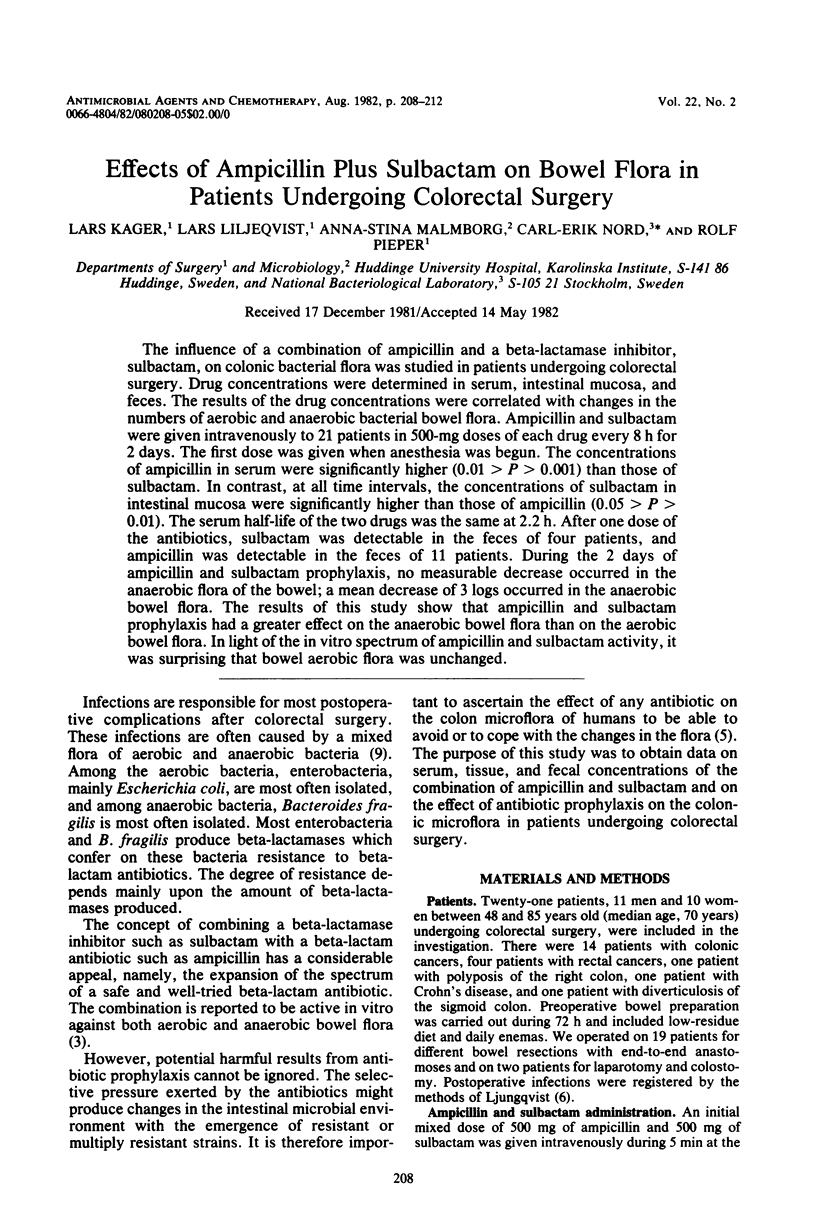
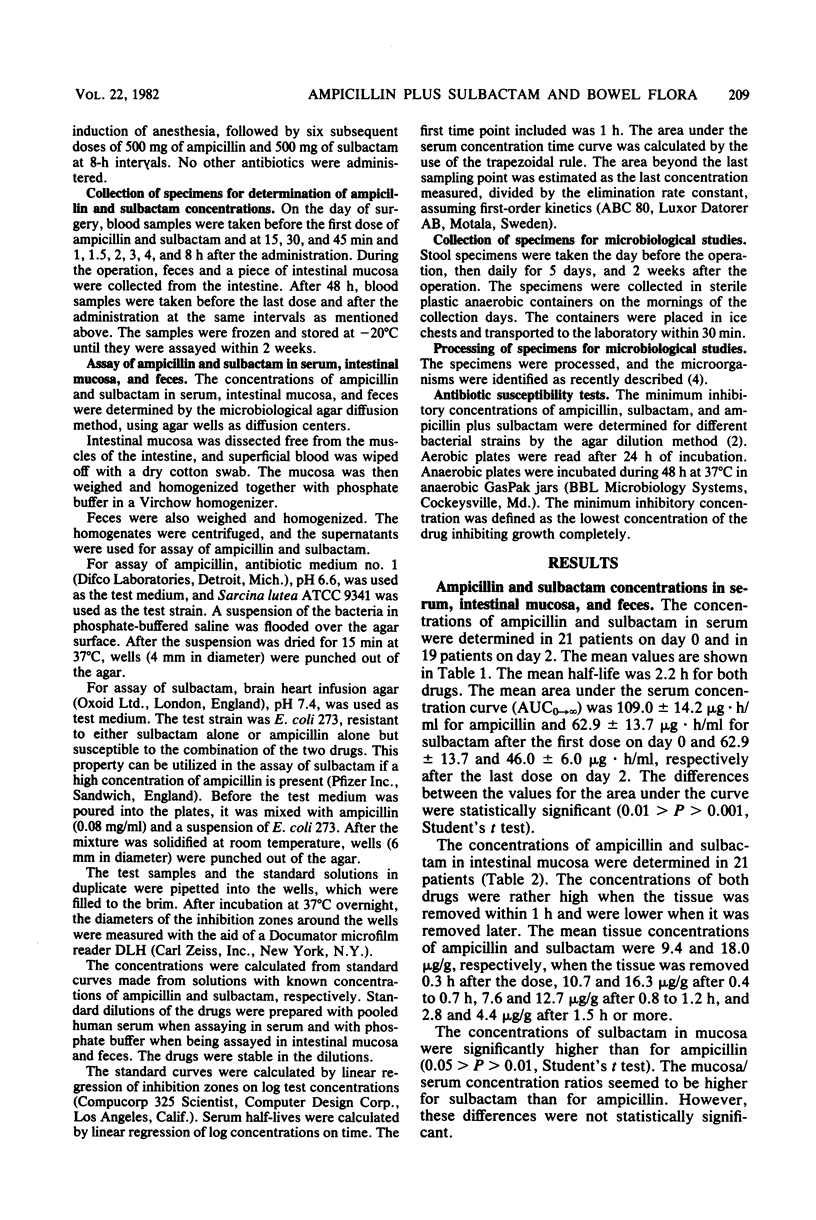
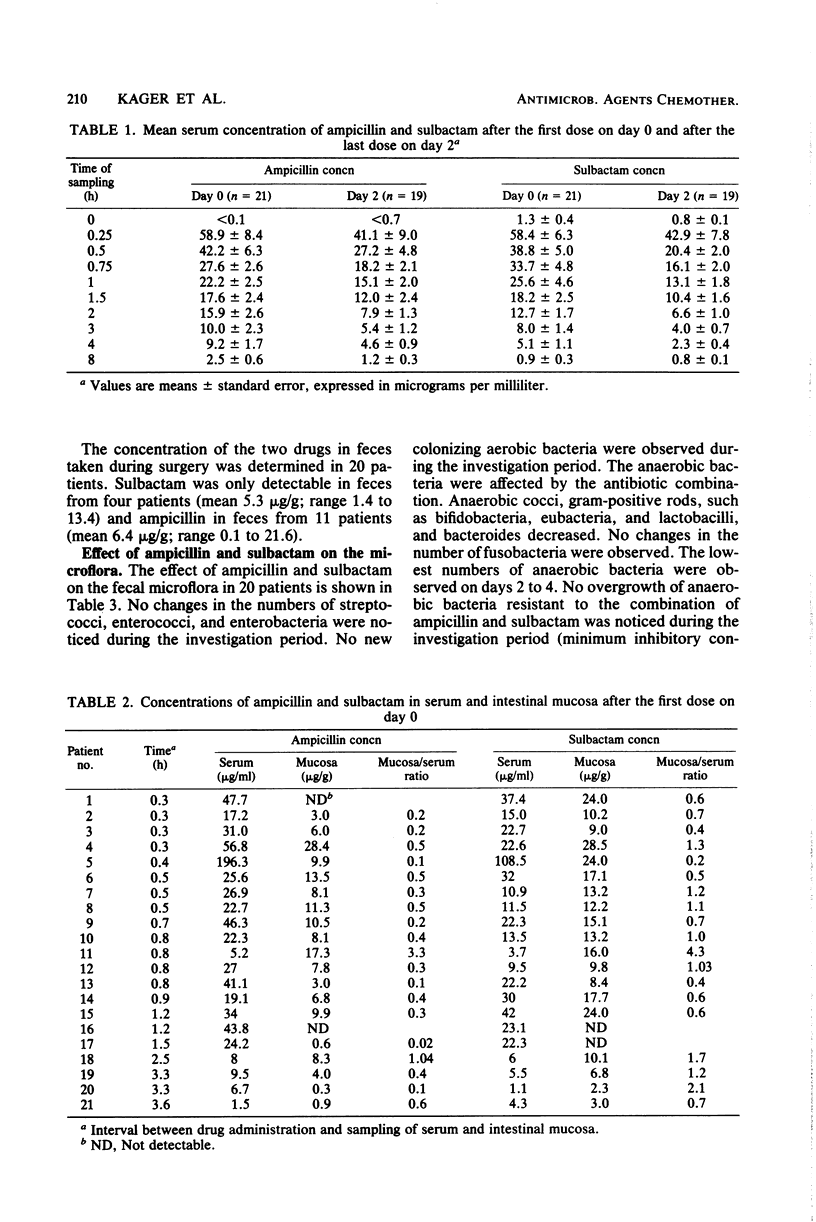
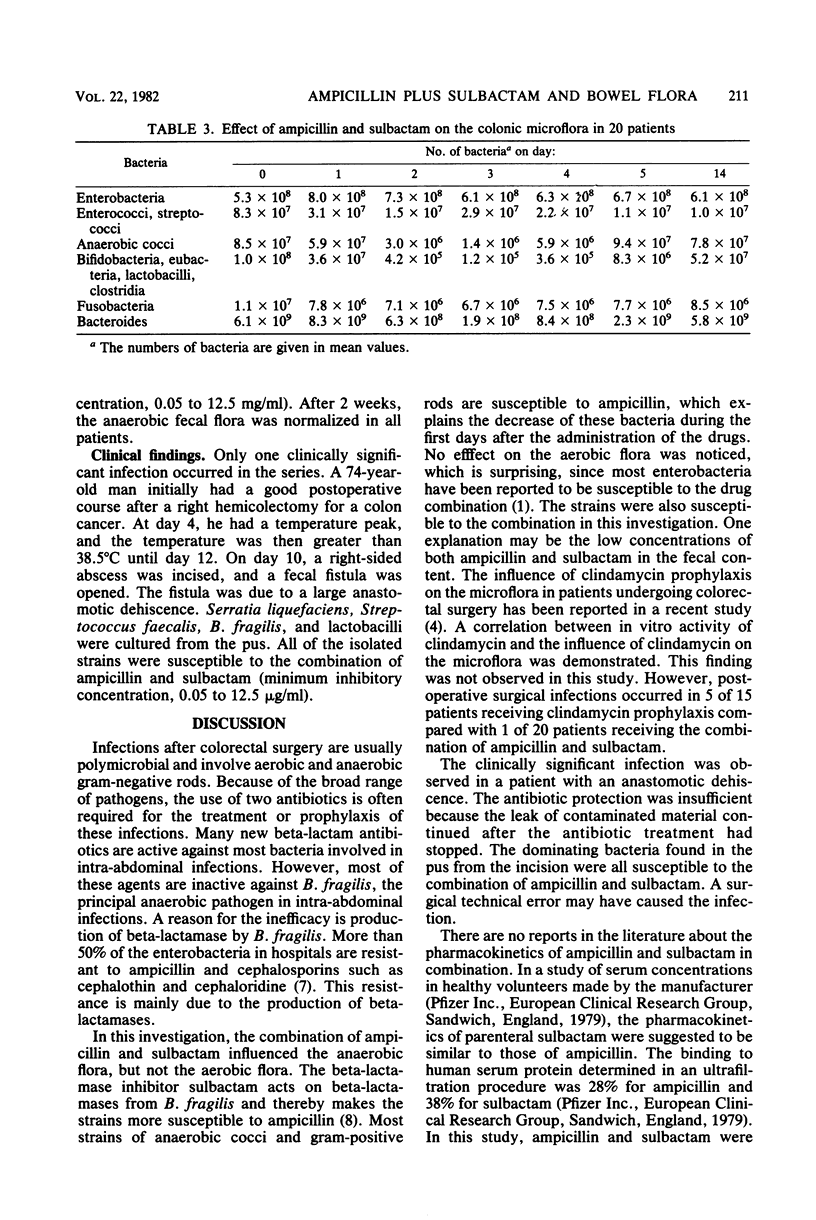
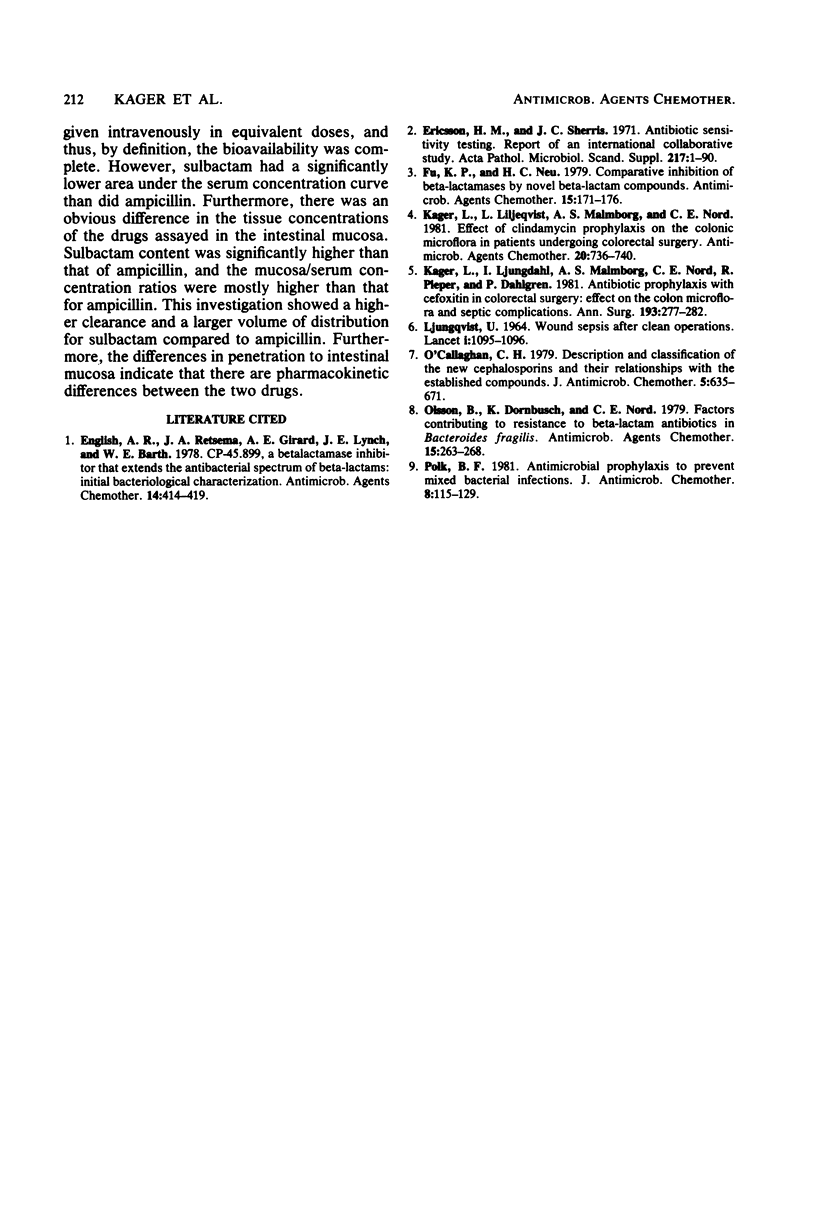
Selected References
These references are in PubMed. This may not be the complete list of references from this article.
- English A. R., Retsema J. A., Girard A. E., Lynch J. E., Barth W. E. CP-45,899, a beta-lactamase inhibitor that extends the antibacterial spectrum of beta-lactams: initial bacteriological characterization. Antimicrob Agents Chemother. 1978 Sep;14(3):414–419. doi: 10.1128/aac.14.3.414. [DOI] [PMC free article] [PubMed] [Google Scholar]
- Fu K. P., Neu H. C. Comparative inhibition beta-lactamases by novel beta-lactam compounds. Antimicrob Agents Chemother. 1979 Feb;15(2):171–176. doi: 10.1128/aac.15.2.171. [DOI] [PMC free article] [PubMed] [Google Scholar]
- Kager L., Liljeqvist L., Malmborg A. S., Nord C. E. Effect of clindamycin prophylaxis on the colonic microflora in patients undergoing colorectal surgery. Antimicrob Agents Chemother. 1981 Dec;20(6):736–740. doi: 10.1128/aac.20.6.736. [DOI] [PMC free article] [PubMed] [Google Scholar]
- Kager L., Ljungdahl I., Malmborg A. S., Nord C. E., Pieper R., Dahlgren P. Antibiotic prophylaxis with cefoxitin in colorectal surgery: effect on the colon microflora and septic complications--a clinical model for prediction of the benefit and risks in using a new antibiotic in prophylaxis. Ann Surg. 1981 Mar;193(3):277–282. doi: 10.1097/00000658-198103000-00005. [DOI] [PMC free article] [PubMed] [Google Scholar]
- LJUNGQVIST U. WOUND SEPSIS AFTER CLEAN OPERATIONS. Lancet. 1964 May 16;1(7342):1095–1097. doi: 10.1016/s0140-6736(64)91291-7. [DOI] [PubMed] [Google Scholar]
- O'Callaghan C. H. Description and classification of the newer cephalosporins and their relationships with the established compounds. J Antimicrob Chemother. 1979 Nov;5(6):635–671. doi: 10.1093/jac/5.6.635. [DOI] [PubMed] [Google Scholar]
- Olsson B., Dornbusch K., Nord C. E. Factors contributing to resistance to beta-lactam antibiotics in Bacteroides fragilis. Antimicrob Agents Chemother. 1979 Feb;15(2):263–268. doi: 10.1128/aac.15.2.263. [DOI] [PMC free article] [PubMed] [Google Scholar]
- Polk B. F. Antimicrobial prophylaxis to prevent mixed bacterial infection. J Antimicrob Chemother. 1981 Dec;8 (Suppl 500):115–129. doi: 10.1093/jac/8.suppl_d.115. [DOI] [PubMed] [Google Scholar]


